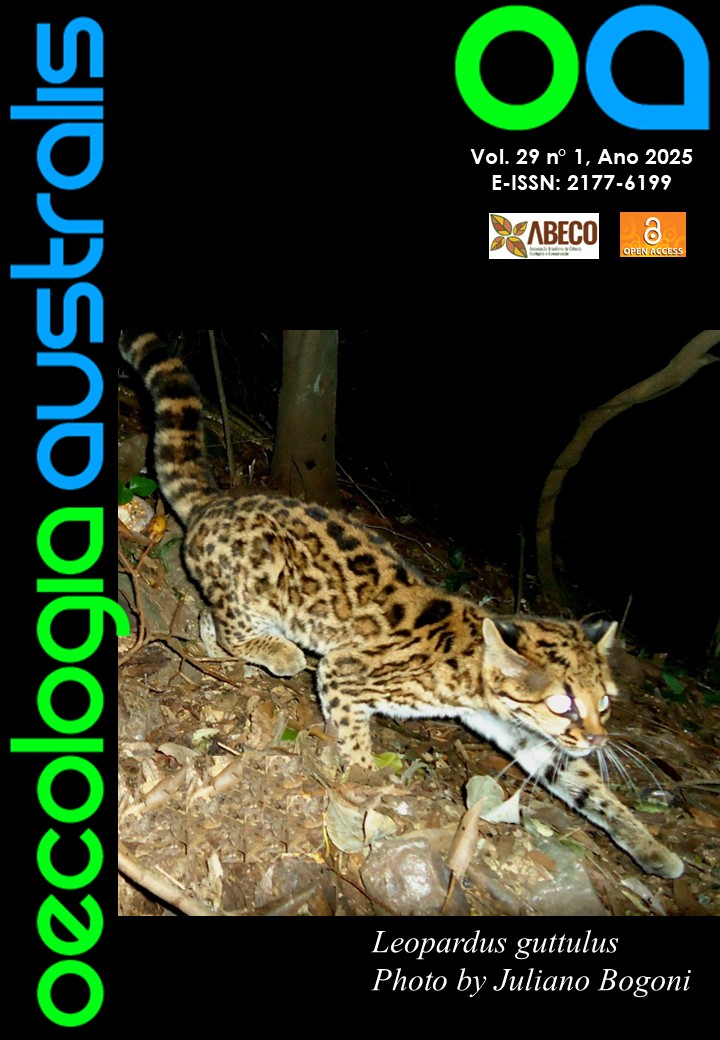CAN AN OUTBREAK OF MORBILLIVIRUS AFFECT THE SOCIAL STRUCTURE OF THE GUIANA DOLPHIN (Sotalia guianensis)? A CASE STUDY OF THE POPULATION OF SEPETIBA BAY IN SOUTHEASTERN BRAZIL
Guiana dolphin social structure after a morbillivirus outbreak
DOI:
https://doi.org/10.4257/oeco.2025.2901.05Resumo
Studies show that the infection of cetaceans by socially transmitted diseases may impact the ecology and behavior of individuals and populations. Little is known about the effects of intense, short-term outbreaks of disease, typical of cetacean morbillivirus (CeMV). Understanding these effects is important in the case of resident populations exposed to multiple anthropogenic impacts, as in the case of the Guiana dolphins, Sotalia guianensis, of Sepetiba Bay (BSEP), Rio de Janeiro, Brazil. Two hundred and ten Guiana dolphins died of CeMV in BSEP between November 2017 and March 2018. We investigated whether the outbreak affected the occurrence of Guiana dolphins in the BSEP and whether the size, composition, and cohesion of the dolphin groups shifted significantly. We conducted 25 surveys in BSEP from 2017 to 2019 and found no significant variation between the two periods (pre-CeMV and post-CeMV) in either the occurrence of dolphins or the size, composition, or cohesion of groups. During the pre-CeMV period, 32 groups were observed, with a mean group size of 16.60±21.12 individuals, all groups containing at least one calf, while the “tight” group cohesion pattern was observed most frequently. Eighteen groups were sighted during the post-CeMV period, with a mean size of 23.67±27.51 individuals, with 87.50% of groups containing at least one calf and “mixed” cohesion being the most frequent. We indicate that, over the short term, there was no significant change in the social dynamics of the Guiana dolphin groups in the BSEP after the morbillivirus outbreak, although further monitoring over a longer time scale, and focusing on specific aspects of the species would be necessary to provide more ample insights into the impacts of morbillivirus on this dolphin population. This is important in the context of the cumulative impacts of human activities on this population that have occurred over the past decade.


